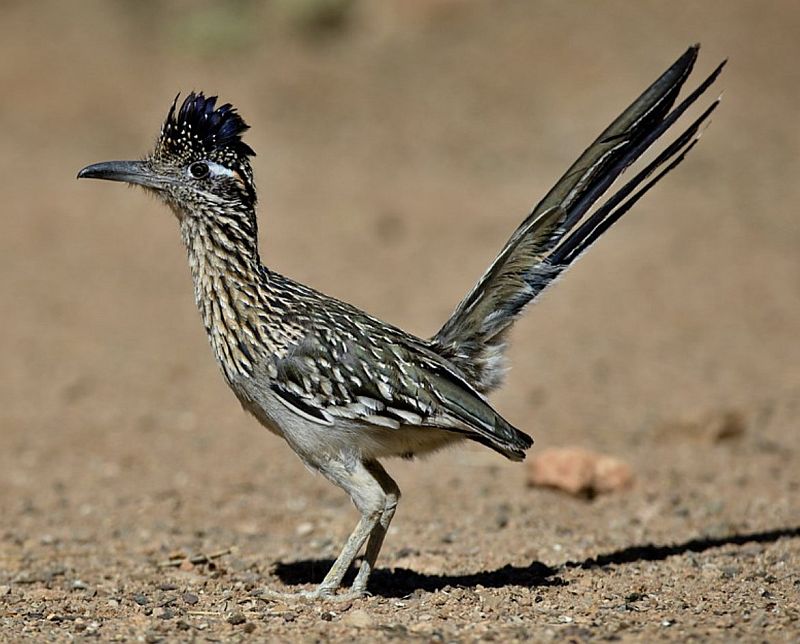Comb-crested Jacanas have an exceptionally long hind toe (about 75 mm) that helps them walk on waterweeds. Due to this habit, it is commonly called Christbird or Lilytrotter. Comb-crested jacanas are the only species in the genus Irediparra. Among the seven waders in its family, the bird has long legs. With one exception, the tail is short, the wings are quite large, and the toes and claws are extraordinarily large.

It takes it some time to gather speed and extend its legs behind due to its long legs, and its wings work overtime before it can gain speed and extend its legs behind. Despite the fact that they appear awkward in the air, they are very agile when it comes to running and walking over floating vegetation, where they spend their entire lives. When alert, their heads nod forward and back as they walk.
Similar to rails, comb-crested Jacanas have many features in common. There are a few similarities between the two species, including their long toes and frontal shields, the way they flick their tails while walking along, and the number of extra nests they build for roosting at night. The way they fly is also similar.
As soon as they are startled, they quickly beat their wings and stretch their legs, but they land quickly again. Birds can change the color of their combs from red to yellow in moments of excitement; their blood is drained.

They probe and peck among the vegetation along the edges of pools and among floating leaves, either solitary or in pairs. There is a tendency for it to congregate in flocks. Whenever disturbed, it lands on open vegetation after flying low over the water.
Aquatic plants, seeds, and insects probably make up the majority of their diet. The birds spend most of their time feeding during the day, and they often sunbathe on top of pond plants while lying on their sides. The comb-crested jacana becomes aggressive when it defends its territory vigorously against other birds of the same species during the breeding season.
Nesting usually takes place between September and January in eastern Australia. In the north of Australia, they nest later, from January to May, possibly due to monsoonal rains. Most of the time, their sheltered platform nest of plant matter is submerged in water that is more than one meter deep.

The young birds are cared for by both parents. During nesting, adults become extremely cautious. Young and adult birds, even though their feet are not webbed, can dive and swim underwater when disturbed by a nest or threatened by a predator.
They can remain motionless underwater for half an hour with only their nostrils and bill visible. In response to disturbance, adults with young may flail and flounder as if they had a broken wing. Eggs and young feathery creatures that have disproportionately long limbs and toes have been seen being carried under the wings of adult birds.
When the water level suddenly rises or falls, this unusual habit becomes crucial for survival. Lilytrotter, Lotus-bird, and Christbird are some of the other names. Its natural habitat is the floating vegetation of tropical freshwater wetlands, like that of other jacana species.
Comb-crested Jacanas measure 200-240 mm in length. Males and females are similar in size; females are half as long as males. If you’re looking for a fleshy forehead comb, you can find it in red, orange, or yellow. Black is found on the crown, the back of the neck, the breast band, the tail, and the flight feathers.
The upper wing coverts and the back are deep olive-brown. White is the color of the neck and belly. Golden yellow washes the sides of the face and lower neck, with a black line between the lower bill and the eye. Yellow is the color of his eyes.

Yellow flesh with brown tips makes up the bill. Olive-green is the color of the legs, feet, and toes. Immature birds have rufous heads and napes, and their breasts do not have black bands. Their breast band, head, and nape are black and rufous in later stages, but their other areas are an adult.
Downy young have a bright buff upper surface and a white underside with dark lines along the sides and back. During the breeding season, the comb-crested jacana makes a shrill alarm call like a trumpet, as well as a pee-pee-pee contact call.
Breeding and nesting take place between September and May. Nests are fragile, but sometimes substantial rafts of aquatic vegetation and sedge. The eggs of this Jacana species are glossy bright tan and thickly covered with black squiggles and fine brown wavy lines; they are pyriform, about 30 x 23 millimeters in size. Incubation is carried out by both sexes. When the young hatch, they are well-developed and soon leave the nest. From floating vegetation on the water’s surface, it consumes seeds and aquatic insects.
There are irregular populations of this species along the coast and subcoastal regions of northern and eastern Australia, west to the Kimberleys and southeast to Hawkesbury River, NSW.
A moderately abundant species, it can be found in deeper, permanent freshwater swamps, ponds, and billabongs. A brown-backed race is the only one in Australia, crossing the Torres Strait into New Guinea. Read More – Sooty Oystercatcher (Haematopus fuliginosus)







